
Richard III was king of England from 26 June 1483 until his death in 1485. He was the last king of the Plantagenet dynasty and its cadet branch the House of York. His defeat and death at the Battle of Bosworth Field, the last decisive battle of the Wars of the Roses, marked the end of the Middle Ages in England.
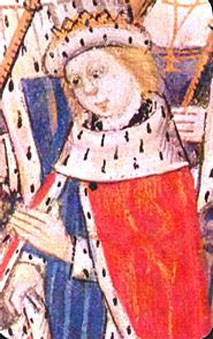
Edward V was King of England from 9 April to 25 June 1483. He succeeded his father, Edward IV, upon the latter's death. Edward V was never crowned, and his brief reign was dominated by the influence of his uncle and Lord Protector, the Duke of Gloucester, who deposed him to reign as King Richard III; this was confirmed by the Act entitled Titulus Regius, which denounced any further claims through his father's heirs.

George Plantagenet, Duke of Clarence, was the sixth child and third surviving son of Richard Plantagenet, 3rd Duke of York, and Cecily Neville, and the brother of English kings Edward IV and Richard III. He played an important role in the dynastic struggle between rival factions of the Plantagenets now known as the Wars of the Roses.

Lambert Simnel was a pretender to the throne of England. In 1487, his claim to be Edward Plantagenet, 17th Earl of Warwick, threatened the newly established reign of Henry VII (1485–1509). Simnel became the figurehead of a Yorkist rebellion organised by John de la Pole, Earl of Lincoln. The rebellion was crushed in 1487. Simnel was pardoned because of his tender years, and was thereafter employed by the royal household as a scullion.

The Princes in the Tower refers to the mystery of the fate of the deposed King Edward V of England and his younger brother Prince Richard of Shrewsbury, Duke of York, heirs to the throne of King Edward IV of England. The brothers were the only sons of the king by his queen, Elizabeth Woodville, living at the time of their father's death in 1483. Aged 12 and 9 years old, respectively, they were lodged in the Tower of London by their paternal uncle and England's regent, Richard, Duke of Gloucester, supposedly in preparation for Edward V's forthcoming coronation. Before the young king could be crowned, however, he and his brother were declared illegitimate. Gloucester ascended the throne as Richard III.

Fotheringhay is a village and civil parish in North Northamptonshire, England. It is 4 miles (6.4 km) north-east of Oundle and around 13 miles (21 km) west of Peterborough. It is most noted for being the site of Fotheringhay Castle which was razed in 1627. There is nothing left of the castle to be seen today other than the motte on which it was built that provides excellent views of the River Nene. The Nene Way long distance footpath runs through the village.

Henry Stafford, 2nd Duke of Buckingham, KG was an English nobleman known as the namesake of Buckingham's rebellion, a failed but significant collection of uprisings in England and parts of Wales against Richard III of England in October 1483. He was executed without trial for his role in the uprisings. Stafford is also one of the primary suspects in the disappearance of Richard's nephews, the Princes in the Tower.
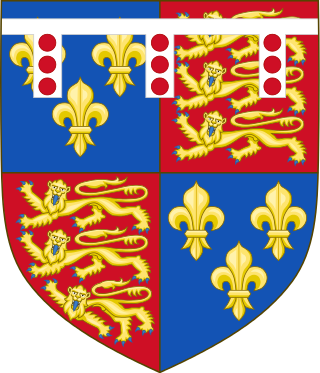
The House of York was a cadet branch of the English royal House of Plantagenet. Three of its members became kings of England in the late 15th century. The House of York descended in the male line from Edmund of Langley, 1st Duke of York, the fourth surviving son of Edward III. In time, it also represented Edward III's senior line, when an heir of York married the heiress-descendant of Lionel, Duke of Clarence, Edward III's second surviving son. It is based on these descents that they claimed the English crown. Compared with its rival, the House of Lancaster, it had a superior claim to the throne of England according to cognatic primogeniture, but an inferior claim according to agnatic primogeniture. The reign of this dynasty ended with the death of Richard III of England at the Battle of Bosworth Field in 1485. It became extinct in the male line with the death of Edward Plantagenet, 17th Earl of Warwick, in 1499.

Thomas Bourchier was a medieval English cardinal, Archbishop of Canterbury, and Lord Chancellor of England.

Cecily Neville was an English noblewoman, the wife of Richard, Duke of York (1411–1460), and the mother of two kings of England—Edward IV and Richard III. Cecily Neville was known as "the Rose of Raby", because she was born at Raby Castle in Durham, and "Proud Cis", because of her pride and a temper that went with it, although she was also known for her piety. She herself signed her name "Cecylle".
John Neville, 1st Marquess of Montagu was a major magnate of fifteenth-century England. He was a younger son of Richard Neville, 5th Earl of Salisbury, and the younger brother of Richard Neville, Earl of Warwick, the "Kingmaker".
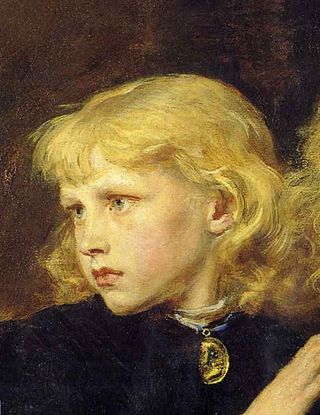
Richard of Shrewsbury, Duke of York, was the sixth child and second son of King Edward IV of England and Elizabeth Woodville, born in Shrewsbury. Richard and his older brother, who briefly reigned as King Edward V of England, mysteriously disappeared shortly after their uncle Richard III became king in 1483.
Sir Richard Grey was an English knight and the half-brother of King Edward V of England.
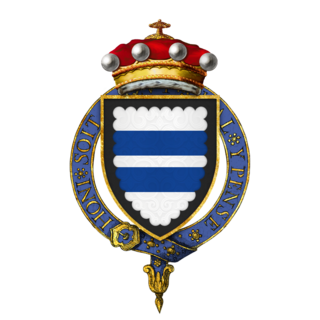
Sir William Parr, KG (1434–1483) was an English courtier and soldier. He was the eldest son of Sir Thomas Parr (1405–1461) and his wife Alice, daughter of Sir Thomas Tunstall of Thurland, Lancashire.

Elizabeth of York, Duchess of Suffolk also known as Elizabeth Plantagenet was the sixth child and third daughter of Richard Plantagenet, 3rd Duke of York and Cecily Neville. She was thus a sister of kings Edward IV and Richard III.

Anne of York, Duchess of Exeter, aka Anne Plantagenet, was the first child of Richard Plantagenet, 3rd Duke of York, and Cecily Neville. She was thus the eldest sister of kings Edward IV (1461–1483) and Richard III (1483–1485) and their siblings Edmund, Earl of Rutland; Elizabeth of York, Duchess of Suffolk; Margaret, Duchess of Burgundy; and George Plantagenet, 1st Duke of Clarence.
Events from the 1460s in England.

Alice Chaucer, Duchess of Suffolk, LG was a granddaughter of the English poet Geoffrey Chaucer. Married three times, she eventually became a Lady of the Most Noble Order of the Garter, an honour granted rarely to women and marking the friendship between herself and her third husband, William de la Pole, 1st Duke of Suffolk, with King Henry VI and his wife Margaret of Anjou.
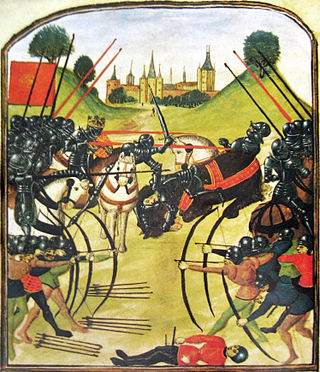
The Wars of the Roses (1455–1487), known at the time and for more than a century after as the Civil Wars, was a series of civil wars fought over control of the English throne in the mid-to-late fifteenth century. These wars were fought between supporters of two rival cadet branches of the royal House of Plantagenet: Lancaster and York. The wars extinguished the last male line of the House of Lancaster in 1471, leading to the Tudor family inheriting the Lancastrian claim to the throne. Following the war and the extinction of the last male line of the House of York in 1485, a politically arranged marriage united the Houses of Lancaster and York, creating a new royal dynasty which inherited the Yorkist claim as well, thereby resolving the conflict.
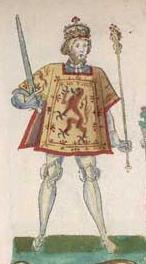
The Treaty of York (1464) was made between England and Scotland on 1 June 1464 at York and was intended to establish 15 years of peace. Previously Scotland had supported the defeated House of Lancaster in the English civil War of the Roses.



























